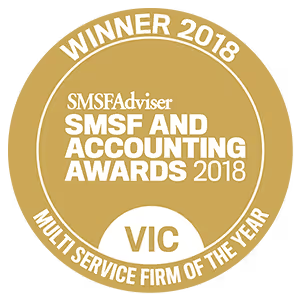New super laws kicked off in July 2020 that changed super accounting rules in Australia. These are known as carry-forward contributions.
In this article, we discuss what they are, and what they mean for your superannuation.
Find out more about the tax experts on our team at Liston Newton Advisory today to get the best advice on how you can make your personal super contributions as tax-effective as possible.
What are carry-forward contributions?
Carry-forward concessional contributions have previously been known under a different name: catch-up contributions.
First announced in the 2016 Federal Budget, this makes the $25,000 cap to personal contribution concessions more manageable for individuals.
Under this rule, any unused portion of your $25,000 personal concessional contributions can be rolled over in the following financial year, to use anywhere within a rolling five-year period. So if you don’t use the full $25,000 concessional contribution amount, you can carry the unused portion forward and take advantage of it at a time that suits you.
However, only unused concessional contributions from 1 July 2018 and onwards are eligible to be carried forwards. Any unused amount expires after five years.
Understanding concessional superannuation contributions
Concessional super contributions are those that have received a lower tax rate through special concession. Essentially, they’re your before-tax super payments.
But this is probably the question you’ve been wondering: what are the reportable superannuation contributions I can make that count towards my concessional contributions?
Basically, any personal super contribution you make up until your $25,000 cap counts towards these contributions.
If your income is less than $250,000, each of these special contributions is taxed at a lower rate of 15% as a way to incentivise saving for your retirement. For most people, this tax rate is lower than the tax rate they pay on their income, so it’s an attractive, tax-effective way to save money.
Who benefits most from carry-forward contributions
A cap on annual concessional super contributions can make it hard for those people with irregular income, or take time out from work, to build their retirement savings. So the carry-forward contributions scheme was introduced to enable those people with non-standard work patterns to take advantage of existing concessions available in the superannuation system.
It’s useful for those who work part-time, or have taken time away from their career, whether it’s to raise a family, for medical reasons, or for further study. It can also be an advantage for those later in life who, due to reduced household costs, find themselves with more disposable income available.

Eligibility rules for carry-forward contributions
Your Total Super Balance (TSB) must be less than $500,000 at 30 June of the last financial year to be eligible to make a carry-forward concessional contribution.
Calculating your TSB is done by adding the total amount of funds available, in all phases of your super, on 30 June that financial year. This includes the accumulation phase of your super, the retirement phase, and any active roll-overs you may have had on the go.
If your TSB is less than $500,000 at this point, you’re eligible to make carry-forward contributions.
If your TSB gets below $500,000 in the future, you’re eligible to apply that financial year’s unused concessional contributions in a future financial year.
How to use carry-forward contributions to minimise your tax
Unused concessional super contributions are a great way to minimise tax in future years when you expect a high amount of income. They’re tax-deductible, so the more you're able to contribute to your super the higher the potential tax deduction will be.
Example
Ashleigh earns $150,000 salary with her employer in the 2021 financial year. She also decides to sell her investment property, and after capital gains discounts, she has a taxable gain of $100,000.
This capital gain is added to her income for the year, increasing her taxable income to $250,000. Therefore, her total tax payable will be just over $90,000.
However, if Ashleigh was to use carry-forward contributions to minimise her tax bill, she could do the following:
- Ashleigh had some time off work over the last few years, resulting in an unused concessional contribution balance of $50,000. She is able to use this full amount in one go, so Ashleigh makes a carry-forward contribution of $50,000.
- This reduces her taxable income by $50,000, down from $250,000 to $200,000.
- Her tax payable is then reduced down to just over $67,000, plus her personal super fund pays 15% tax on the contribution ($7,500).
This makes her total tax payable $74,500. Compared to the original $97,000 payable, Ashleigh enjoys a tax saving of approximately $22,500, and her retirement savings have received a huge boost.
How to calculate your carry-forward amount
- Contact all super funds in which you hold an account and request a current valuation of your balance. Add this together to get your TSB.
- Don’t forget to confirm your last reported super balance, across all the accounts, with the ATO. You can find this information through your MyGov account.
- Confirm that your TSB is less than $500,000.
- Go through your tax information for the previous five years to find out the amount of concessional contributions you made each year, and how much was left unused.
- Then, add together all the unused portion for the last five years. This should give you the amount available in your carry-forward contributions for this financial year.
The final word
Carry-forward contributions are a great way to build your retirement savings. The new changes to accounting rules in Australia will allow you to boost your super funds, and minimise the amount of tax you pay.
However, it is a complicated process, and it can be quite easy to end up making an error — which would have the opposite effect of what you’re looking to achieve.






